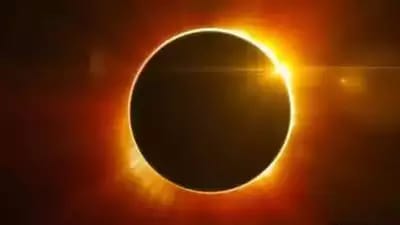
Solar Eclipse 2024: The End Of The Decade’s Celestial Spectacle
Amongst the most anticipated astronomical events this decade, certainly one of them is the solar eclipse in 2024. This eclipse will be viewed as a far greater spectacle if the moon passes between the Earth and the Sun, casting its shadow over portions of the planet, and millions will witness a total or partial obscuration of the Sun. Let’s see what makes this eclipse very special, how it occurs, and what we can expect that particular day.
What is a Solar Eclipse?
- A solar eclipse occurs when the moon aligns between Earth and Sun, partially or fully dimming the Sun’s light for some time. Depending on the positioning, solar eclipses fall into one of three categories:.
- Partial Solar Eclipse: Only a portion of the Sun is masked by the moon; thus it shows up as a crescent-shaped Sun.
- Annular Solar Eclipse: In this eclipse, the moon is too far from the Earth to cover the Sun completely, but leaves behind a “ring of fire” around the moon.
The 2024 solar eclipse will be a total solar eclipse, hence making it one of the most spectacular happenings of the century. Total eclipses acquire such an electrifying experience for observers because they become enabled to experience the day turning to night, with temperatures dropping, and seeing the corona, which is the outermost part of the Sun’s atmosphere.
Path of Totality
The path of totality is that narrow region where observers will see a total eclipse. In this event, the eclipse of April 8, 2024, it will reach parts of North America-from Mexico to the United States and, onwards, into Canada-.
Starting in Mexico and making its way northeast through the United States, the total eclipse is expected to pass through states from Texas to Arkansas and Missouri, Illinois, Indiana, Ohio, New York, and Vermont. As it continues further into parts of Ontario and Quebec, the track cuts across much of North and Central America. Outside the path of totality, a partial solar eclipse will be visible throughout much of North and Central America.
The path of totality is about 100 to 120 miles wide, so people along this path will see the obscuration of the Sun completely for as long as several minutes, depending on exactly where they are. For example, cities like Dallas, Texas, and Cleveland, Ohio, will be in the path of totality so that residents and visitors can observe the full solar spectacle.
Timings and Duration
The eclipse will fall on **April 8, 2024**, and the totality will be the shortest at most locations. However, if performed at the peak time, the total phase will last as long as 4 minutes and 28 seconds when the Sun will completely be covered. That’s really a pretty long time for a total solar eclipse. In the last one which has just occurred in 2017, the maximum duration for the total solar eclipse had stretched to more than 2 minutes.
The first point of totality lies in the Pacific Ocean and then moves to Mexico at 11:07 AM PDT, continuing through the United States towards Canada by 3:35 PM EDT, and then off into space leaving from Earth’s surface.
Solar Eclipses and their Scientific Importance
Solar eclipses are not just beautiful astronomical phenomena; they bear great scientific significance. During a total solar eclipse, the corona of the Sun becomes visible to the naked eye. The corona is the outer atmosphere of the Sun. The study of the corona can provide much-needed insights into solar winds, coronal mass ejections, and space weather in general.
Historically, total solar eclipses have given the science world opportunities to achieve some paradigm-changing discoveries. For instance, the celebrated eclipse of 1919 helped confirm the general theory of relativity of Einstein. Observers during that eclipse had noted that starlight curves around the Sun, thus verifying predictions from the theory about the way light behaves around gravity.
Even today, eclipses open windows to study the Sun. The scientists made use of modern instruments such as spectrometers and telescopes to view the corona, solar flares, and prominences. Such observations can help predict solar storms that interrupt satellite communications, GPS, and even affect power supply in Earth.
Preparations for Solar Eclipse 2024
If you are going to observe the 2024 solar eclipse, better plan well. Here are some steps to ensure safe and enjoyable observation:
- Travel Plans- There’s only a small portion of Earth that will see totality, so travel plans need to be made well in advance. Several eclipse enthusiasts travel to the path of totality and hotels, campgrounds, and viewing spots can fill up pretty early. Cities such as Dallas, Little Rock and Indianapolis should see large crowds.
- Safety First: Never view the Sun directly without proper equipment at the time of viewing a partial solar eclipse. View filters or ISO-certified combined solar glasses are to be used. Common sunglasses cannot protect the eyes from damage due to direct Sunlight. The eye can be safely looked at directly only during the short totality, which lasts for as long as the Moon completely covers the Sun.
- Assuming you’ll be traveling out in the southwest United States for clear skies, this eclipse might turn out to be a “binocular” event as the path of totality appears rather narrow.
- Record the Experience: In case you feel a need to capture the event photographically or video-graphically, make sure that all your equipment is prepared beforehand. Cameras should have solar filters designed specially for the purpose of protecting the glass from getting damaged while viewing the Sun. It will also be wise to try out using the equipment beforehand, so that it becomes easy to document the experience without many distractions.
How to Witness the Eclipse Spiritually and Culturally
For many years, solar eclipses have been understood and considered mysterious and powerful phenomena throughout history, bringing forth a sense of fear or wonder across the various cultures. Ancient people saw eclipses as omens or messages from gods, while to others, eclipses marked special events.
In this context, the modern world views all manner of people in uniform coming together to watch these events, thereby filling the event with a taste of the holy or contemplative nature.
Not without success, perhaps thousands of like-minded folk journey to specific locations on their own, coupled with fellow eclipse enthusiasts and, in essence, experience it as a communal exhibit of cosmic marvel.
The Next Solar Eclipse
If you can’t make it to the 2024 solar eclipse, the next opportunity in North America for a total solar eclipse will occur in **2045**, which promises another long-duration totality and extensive visibility. But the 2024 eclipse has potential to be one of the best viewed and most accessible in decades, making this an event to be seen by astronomers and casual observers alike.
Conclusion
Perhaps the only solar eclipse during one’s lifetime, millions will get to bear witness to one of nature’s most thrilling spectacles. Whether for scientific reason, cultural importance, or beauty, this eclipse is bound to prove memorable for those lucky enough to be exposed to it. As the shadow of the moon sweeps across Earth, it reminds one of the grandeur that is the cosmos and our humble yet meaningful part in it.




